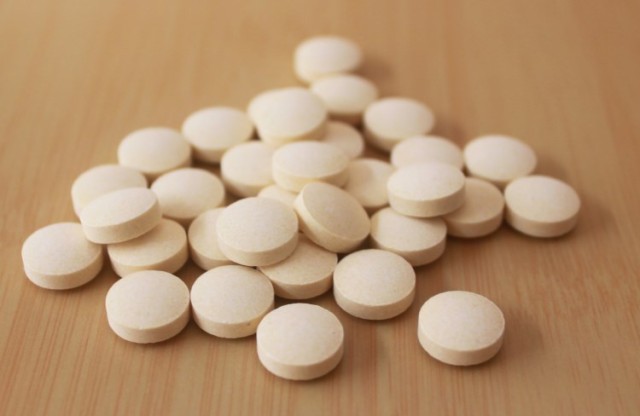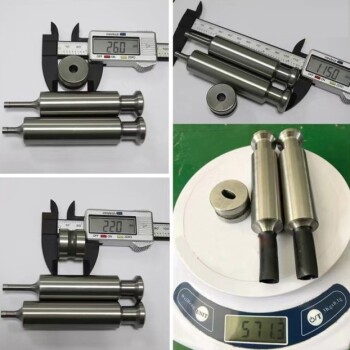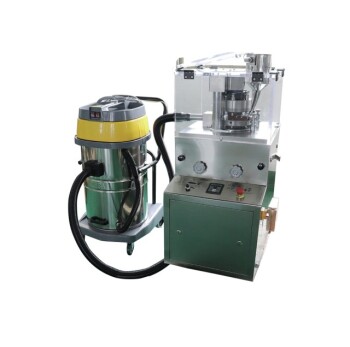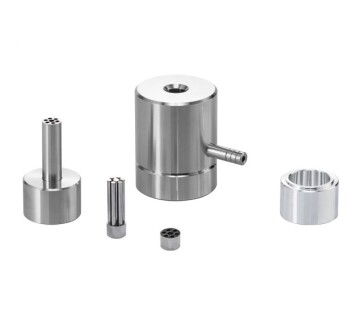Introduction to Hydraulic Tablet Presses
Hydraulic tablet presses represent a cornerstone of modern pharmaceutical and nutraceutical production, revolutionizing the way tablets are manufactured. These advanced machines have evolved significantly, integrating sophisticated design and operational principles that ensure high-quality, consistent tablet production. This comprehensive guide delves into the intricacies of hydraulic tablet presses, exploring their design, operation, and the diverse applications they serve across various industries. From understanding their structural components to analyzing their operational efficiency, this article provides detailed insights into how hydraulic tablet presses maintain their critical role in the production of pharmaceuticals and beyond.
Design and Structural Components
Hydraulic tablet presses are integral to the pharmaceutical industry, designed to transform fine powders into uniform tablets through a precise compression process. The core components of these presses include punches, dies, and the hydraulic pressure mechanism, each playing a critical role in ensuring the tablets meet stringent quality standards.
Punches and Dies
Punches and dies are the foundational elements of a tablet press. The punches, which are typically made from high-grade stainless steel such as AISI 316 or AISI 304, are responsible for imparting the tablet's shape and size. The upper punch compresses the powder from above, while the lower punch supports the tablet from below. The die, a cylindrical chamber, aligns and guides the punches during the compression process.
The material choice for punches and dies is crucial as it impacts the durability and precision of the tablets. AISI 316 stainless steel is preferred for its excellent corrosion resistance and durability, making it suitable for pharmaceutical applications where the equipment may come into contact with aggressive substances. AISI 304, while slightly less resistant to corrosion, offers a good balance of strength and cost-effectiveness.
Hydraulic Pressure Mechanism
The hydraulic pressure mechanism is the driving force behind the tablet compression process. It operates on the principle of Pascal's law, which states that pressure applied anywhere to a fluid in a closed container is transmitted equally in all directions. This mechanism allows for the application of high, uniform pressure, ensuring that the tablets are compressed to the correct density and hardness.
Hydraulic systems in tablet presses are typically powered by an electric motor that drives a pump, which in turn forces hydraulic fluid through the system. The pressure generated can be precisely controlled and adjusted, allowing for the production of tablets with consistent properties. This is particularly important in the pharmaceutical industry, where tablet weight, thickness, and hardness must be tightly regulated to ensure efficacy and safety.
cGMP Compliance
Compliance with Current Good Manufacturing Practices (cGMP) is essential for pharmaceutical equipment, including hydraulic tablet presses. cGMP regulations set forth by organizations such as the FDA ensure that drugs are consistently produced and controlled according to quality standards. This includes stringent requirements for the design, manufacturing, and maintenance of equipment.
To meet cGMP standards, hydraulic tablet presses must be constructed from materials that do not react with or contaminate the pharmaceutical products. Regular maintenance and calibration of the equipment are also required to ensure ongoing compliance and to prevent the production of defective tablets.

Material Specifications
The choice of materials for the construction of hydraulic tablet presses is guided by the need for both functionality and compliance with cGMP regulations. AISI 316 and AISI 304 stainless steels are commonly used due to their suitability in hygienic environments and their resistance to wear and corrosion. These materials ensure that the equipment can withstand the rigorous demands of continuous operation without compromising the integrity of the tablets.
In conclusion, the design and structural components of hydraulic tablet presses are meticulously engineered to meet the high standards of the pharmaceutical industry. From the precision of the punches and dies to the controlled force of the hydraulic mechanism, every aspect of these machines is designed to produce tablets that are safe, effective, and of consistent quality.
Operational Principles and Process
The tablet pressing process in hydraulic presses is a sophisticated operation that involves several key components and steps to ensure the production of tablets with consistent shape, size, and quality. This process is critical in industries such as pharmaceuticals, nutraceuticals, and cosmetics, where uniformity and precision are paramount.
Step-by-Step Explanation of the Tablet Pressing Process
-
Die Filling: The process begins with the filling of the die. Powdered material, which has been prepared and mixed according to the specific formulation, is fed into the die cavity. This is typically achieved through a feeder system that distributes the powder from a hopper into the die cavities, overfilling them initially.
-
Dosing Station: After overfilling, the dosing station comes into play. This component controls the precise amount of powder that remains in the die cavity, ensuring that each tablet has the correct weight. The dosing station works in concert with fill cams to achieve this precision.
-
Pre-Compression: Before the final compression, pre-compression rollers are used. These rollers apply initial compression to the powder in the die cavity, helping to remove any air trapped within and ensuring a more uniform and compacted mass.
-
Main Compression: The main compression step involves the upper and lower punches. The lower punch is lowered into the die, creating a cavity for the powder. The upper punch then descends, applying significant force to the powder. This two-step compression action is crucial as it ensures that the tablet is uniformly compressed from both top and bottom, leading to a stronger and more consistent tablet.
-
Ejection: Once the compression is complete, the lower punch raises, ejecting the newly formed tablet from the die. This step is essential to ensure continuous operation and to prevent any damage to the tablet or the press.

Role of Hydraulic Pressure
Hydraulic presses utilize hydraulic pressure to apply the necessary force for compression. This mechanism allows for precise control over the pressure applied, which is crucial for varying tablet formulations and sizes. Hydraulic pressure is transmitted through a static liquid, ensuring that the force is evenly distributed in all directions. This uniformity is key to achieving tablets with consistent hardness and density.
Analysis of the Two-Step Compression Action
The two-step compression action in hydraulic presses is designed to optimize the tablet-making process. The first step, involving the lower punch, pre-compresses the powder, making it more manageable and uniform. The second step, with the upper punch, applies the final compression, ensuring that the tablet reaches its desired hardness and density. This dual-action compression not only improves the quality of the tablets but also enhances the efficiency of the press, allowing for higher throughput and reduced wear on the press components.
In conclusion, the operational principles and process of tablet pressing in hydraulic presses are meticulously designed to ensure the production of high-quality, uniform tablets. The use of hydraulic pressure, combined with the two-step compression action and precise control mechanisms, allows for flexibility, efficiency, and consistency in tablet manufacturing across various industries.
Versatility and Applications
Hydraulic tablet presses have revolutionized the production of tablets across various industries, showcasing their versatility and wide range of applications. These machines are not limited to the pharmaceutical sector but extend their capabilities to confectionery, nutraceutical, and industrial pellet manufacturing, among others. The ability to produce tablets of varied sizes and shapes makes hydraulic tablet presses an indispensable tool in modern manufacturing processes.
Pharmaceutical Applications
In the pharmaceutical industry, the precision and reliability of hydraulic tablet presses are paramount. These machines ensure that each tablet meets stringent quality standards, essential for maintaining patient safety and efficacy. The pharmaceutical sector utilizes hydraulic tablet presses to manufacture a vast array of medications, from common pain relievers to complex formulations. The ability to independently control weight, thickness, and hardness of tablets, coupled with the capacity to produce up to 1,000,000+ tablets per hour, makes these presses a cornerstone in pharmaceutical production.
Confectionery and Nutraceutical Industries
Beyond pharmaceuticals, hydraulic tablet presses find extensive use in the confectionery and nutraceutical industries. In confectionery, these presses help in creating various shapes and sizes of mints, lozenges, and chewable tablets, enhancing consumer appeal and product diversity. Similarly, in the nutraceutical sector, where health supplements are increasingly popular, hydraulic tablet presses ensure consistent quality and dosage, crucial for consumer trust and product efficacy.

Industrial Pellets and Beyond
Hydraulic tablet presses also play a significant role in the production of industrial pellets, which are used in various applications such as animal feed, fertilizers, and industrial chemicals. The precise compression capabilities of these presses ensure uniform pellets, which are essential for efficient processing and application in these industries.
Moreover, hydraulic tablet presses are adaptable to different materials and formulations, making them suitable for research and development purposes in laboratories. The lab-scale mini tablet press, a smaller version of the hydraulic press, allows for the production of simple and precise tablets from powder, facilitating early-stage product development and testing.
Technological Advancements
Modern hydraulic tablet presses come equipped with advanced features such as the ability to interface with in-house network systems for remote monitoring and data archiving. This integration enhances operational efficiency and data management, crucial for maintaining compliance with current Good Manufacturing Practices (CGMP). Additionally, the use of induced feeders for precise control over the filling of die cavities ensures consistent tablet quality, reducing waste and improving overall productivity.
In conclusion, hydraulic tablet presses stand out for their versatility and broad application spectrum. From pharmaceuticals to confectionery and industrial pellets, these machines offer unparalleled precision and control, driving efficiency and quality in tablet production across multiple sectors. As industries continue to evolve, the adaptability and technological advancements of hydraulic tablet presses will remain key to meeting the growing demands for high-quality, reliable tablet products.
Advantages of Hydraulic Tablet Presses
Hydraulic tablet presses have revolutionized the pharmaceutical and nutraceutical industries by offering superior efficiency, precision, and cost-effectiveness compared to traditional manual presses. These advanced machines are designed to meet the stringent requirements of large-scale production, ensuring consistent quality and high output rates.
Enhanced Efficiency and Production Capacity
One of the most significant advantages of hydraulic tablet presses is their ability to produce a vast number of tablets per hour. Depending on the press size and tooling configurations, these machines can manufacture up to 1,000,000+ tablets per hour. This high production capacity is crucial for meeting the demands of the pharmaceutical and nutraceutical markets, where large volumes of tablets are required to fulfill consumer needs.
Precision Control Over Tablet Characteristics
Hydraulic tablet presses offer unparalleled control over the weight, thickness, and hardness of tablets. This precision is achieved through advanced peripheral devices that allow for independent adjustments to each parameter. The ability to fine-tune these characteristics ensures that every tablet meets the specific standards set by regulatory bodies, guaranteeing product quality and safety.
Advanced Die Cavity Filling Management
The filling of die cavities is a critical step in the tablet manufacturing process. Hydraulic tablet presses utilize induced feeders to precisely control and manage the filling process. This ensures that each die cavity is filled to the exact specifications, resulting in uniform tablets with consistent properties. This level of control minimizes waste and reduces the likelihood of defects, leading to higher overall efficiency.
Integration with Network Systems
Modern hydraulic tablet presses are equipped with interface capabilities that allow them to connect with in-house network systems. This integration enables remote monitoring and data archiving, providing real-time insights into the production process. Operators can track performance metrics, identify potential issues, and make data-driven decisions to optimize production. This feature enhances operational efficiency and ensures that the manufacturing process remains compliant with industry standards.
Cost Efficiency
Hydraulic tablet presses offer greater cost efficiency compared to single punch presses. The ability to produce large volumes of tablets at a high rate reduces the per-unit cost of production. Additionally, the advanced features of hydraulic presses, such as precise control over tablet characteristics and efficient die cavity filling, minimize waste and reduce the need for rework. This translates into significant cost savings over the long term.
Versatility in Application
Rotary hydraulic tablet presses are versatile machines that can meet most tablet batch requirements across various industries. They are widely used in pharmaceutical, nutraceutical, confectionery, and veterinary applications. Furthermore, these presses are also employed in producing catalysts, ceramics, powdered metals, and other materials that require compression. This versatility makes hydraulic tablet presses a valuable investment for any facility involved in tablet manufacturing.
Increased Efficiencies with Servo-Hydraulic Technology
Hydraulic presses equipped with servo-hydraulic technology provide programmable motion, ultra-high precision, energy savings, and fast approach/retract speeds. This state-of-the-art technology ensures consistency and accuracy in high production environments, making it essential for industries that require stringent quality control. The ability to independently control speed and force guarantees that every tablet produced meets the desired specifications, enhancing overall product quality.
Low Maintenance Costs and Durability
Hydraulic tablet presses are built using advanced manufacturing processes and materials, ensuring high durability and low maintenance costs. Unlike manual tablet presses, which may experience wear and corrosion over time, hydraulic presses are designed to withstand long-term use without compromising performance. This durability reduces the need for frequent repairs and maintenance, leading to further cost savings and uninterrupted production.

In conclusion, hydraulic tablet presses offer a range of advantages that make them the preferred choice for modern tablet manufacturing facilities. With their high production capacity, precision control over tablet characteristics, advanced filling management, network integration capabilities, cost efficiency, versatility, and durability, these machines provide a comprehensive solution for meeting the demands of the pharmaceutical and nutraceutical industries. Investing in a hydraulic tablet press ensures that your facility can produce high-quality tablets efficiently and effectively, driving success and growth in a competitive market.
Maintenance and Troubleshooting
Maintaining hydraulic tablet presses is crucial for ensuring their longevity and optimal performance. These machines, known for their high force generation and operational speeds, contain numerous components that require periodic replacement, often referred to as "wear" parts. The quality of these replacement parts significantly impacts the machine's long-term effectiveness and lifespan.
Importance of Quality Parts
Parts such as punches and dies are particularly critical. They not only determine the size, shape, and appearance of the tablets but also influence key attributes like weight, thickness, and hardness. Using high-quality tooling and implementing robust preventive maintenance programs are essential to maintain these attributes over time.
Hydraulic System Maintenance
The hydraulic system is a core component of hydraulic tablet presses and requires meticulous care:
- Hydraulic Oil: Use 20# mechanical oil or 32# hydraulic oil, ensuring it is carefully filtered before addition.
- Lubrication: Regularly check and maintain lubrication between the column shaft and the guide frame to ensure smooth operation.
- Cleanliness: Keep all machine parts clean, especially the column shaft and guide frame, which should be frequently lubricated.
- Noise Detection: If any abnormal noise is detected, immediately stop the machine for inspection. Resume operation only after resolving the issue.
- Temperature Control: Manage the temperature of the hot plate effectively. When the rotary button SA1 is activated, the plate begins to heat. It stops heating automatically once it reaches the preset temperature and resumes heating if the temperature drops below the set value, maintaining a consistent temperature.
Common Issues and Troubleshooting Techniques
Despite regular maintenance, hydraulic tablet presses may encounter issues. Common problems include:
- Low Tablet Quality: This can be due to worn-out punches or dies. Regular inspection and timely replacement of these parts can prevent this issue.
- Hydraulic System Failures: These can be caused by poor oil quality or inadequate lubrication. Ensuring the use of high-quality oil and maintaining proper lubrication can mitigate these risks.
- Operational Noise: Unusual noises often indicate mechanical issues. Immediate inspection and repair are necessary to prevent further damage.

Preventive Maintenance Programs
Implementing a comprehensive preventive maintenance program is essential. This includes:
- Scheduled Inspections: Regularly inspect critical components like punches, dies, and hydraulic systems.
- Proactive Replacement: Replace wear parts before they fail to prevent unexpected downtime.
- Training: Ensure operators are well-trained in basic troubleshooting and maintenance procedures.
By focusing on these areas, manufacturers can significantly enhance the reliability and efficiency of their hydraulic tablet presses, ensuring consistent production quality and minimizing downtime.
Future Trends and Innovations
The field of tablet pressing technology is continually evolving, driven by the need for more efficient, precise, and adaptable manufacturing processes. Emerging trends and innovations in this sector are primarily focused on enhancing the performance of hydraulic systems and integrating advanced digital monitoring and control systems. These advancements are not only improving the quality and consistency of the tablets produced but also making the manufacturing process more sustainable and cost-effective.
Advancements in Hydraulic Systems
Hydraulic systems in tablet presses are critical for applying the necessary pressure to compress powder into solid tablets. Recent innovations have led to the development of more efficient and reliable hydraulic systems. For instance, modern hydraulic systems are now designed with improved fluid dynamics, which reduce energy consumption and heat generation. This not only lowers operational costs but also extends the lifespan of the equipment by reducing wear and tear.
Moreover, advancements in hydraulic components, such as pumps and valves, have enhanced the precision and control over the compression process. This level of precision is crucial for manufacturing tablets with consistent hardness and weight, which are essential for ensuring the efficacy and safety of pharmaceutical products.
Integration with Digital Monitoring and Control Systems
The integration of digital technologies into tablet pressing machinery represents a significant leap forward in the industry. Digital monitoring and control systems allow for real-time adjustments and optimizations of the manufacturing process. These systems typically include sensors that monitor various parameters such as pressure, temperature, and tablet weight. The data collected is then analyzed using sophisticated algorithms to provide insights and automate adjustments, ensuring that each batch of tablets meets the predefined standards.
Furthermore, these digital systems facilitate predictive maintenance, which can identify potential issues before they lead to equipment failure. This proactive approach not only minimizes downtime but also reduces the overall maintenance costs.
Sustainable Manufacturing Practices
Sustainability is becoming an increasingly important consideration in the design and operation of tablet presses. Innovations in this area include the development of energy-efficient motors and the use of eco-friendly materials in the construction of the machinery. Additionally, the optimization of the manufacturing process through digital controls helps in reducing waste and improving resource utilization.
Future Prospects
Looking ahead, the future of tablet pressing technology is likely to be shaped by further advancements in automation and artificial intelligence. The integration of AI could enable more complex analyses of the manufacturing data, leading to even greater efficiencies and improvements in tablet quality. Moreover, the development of modular tablet presses that can be easily reconfigured for different tablet sizes and shapes will enhance flexibility and reduce the need for multiple pieces of equipment.
In conclusion, the ongoing innovations in tablet pressing technology are set to transform the industry, making it more efficient, precise, and sustainable. These advancements will not only benefit manufacturers by reducing costs and improving product quality but also ensure that the end consumers receive safe and effective pharmaceutical products.
Related Products
- Laboratory Manual Hydraulic Pellet Press for Lab Use
- 24T 30T 60T Heated Hydraulic Press Machine with Heated Plates for Laboratory Hot Press
- 30T 40T Split Automatic Heated Hydraulic Press Machine with Heated Plates for Laboratory Hot Press
- Single Punch Tablet Press Machine and Mass Production Rotary Tablet Punching Machine for TDP
- Laboratory Hydraulic Press Split Electric Lab Pellet Press
Related Articles
- Manual Pellet Press: A Comprehensive Guide to Efficient Lab Pelletizing
- Manual Lab Hydraulic Pellet Press: Comprehensive Guide to High-Quality Pellet Preparation
- Manual Hydraulic Pellet Press: An Efficient Tool for Spectral Analyses Preparation
- Comprehensive Guide to Manual Hydraulic Pellet Press
- Automatic Hydraulic Press: The Ultimate Guide for Efficient Sample Preparation and Industrial Processes



















